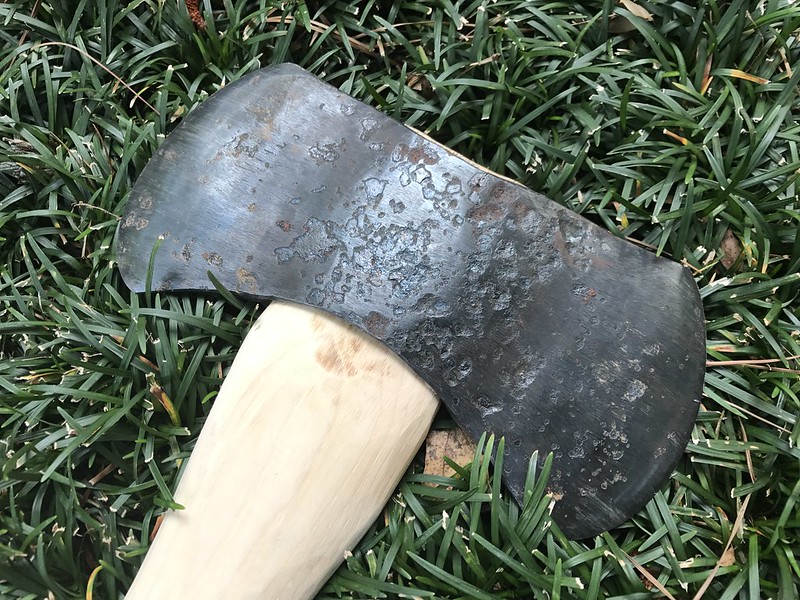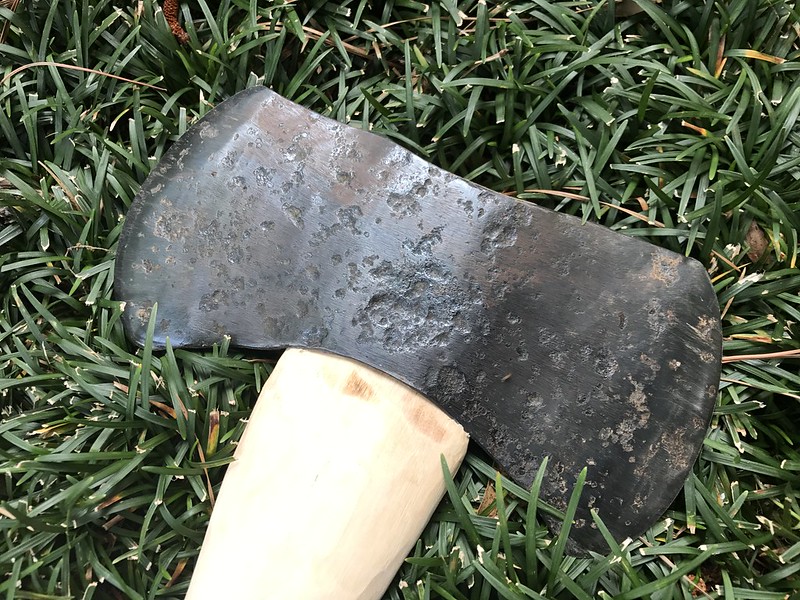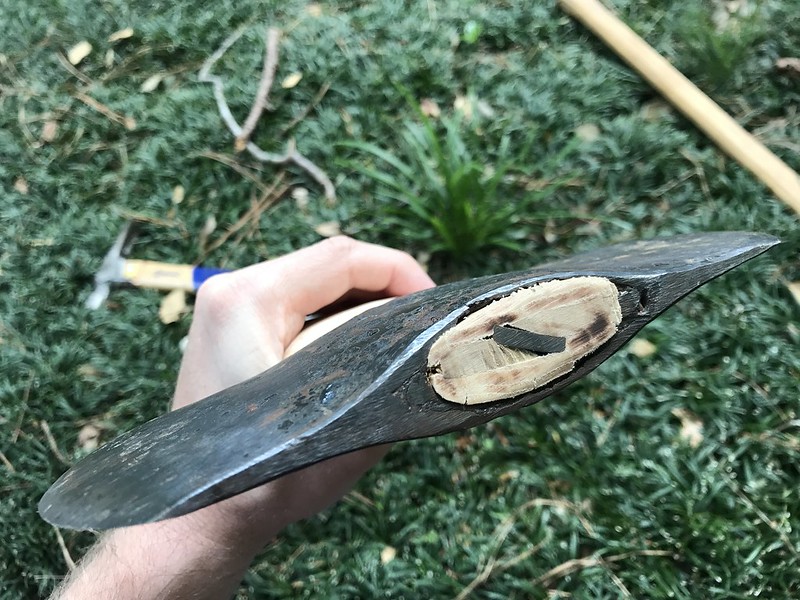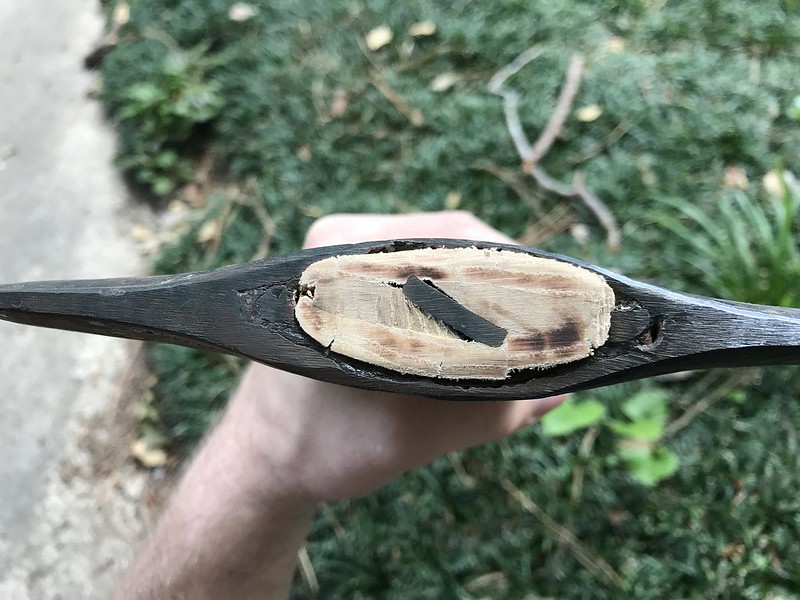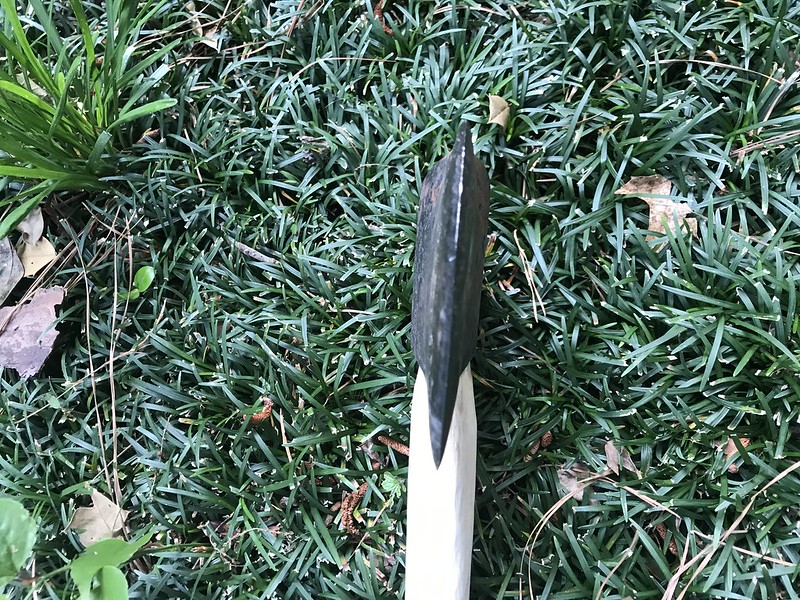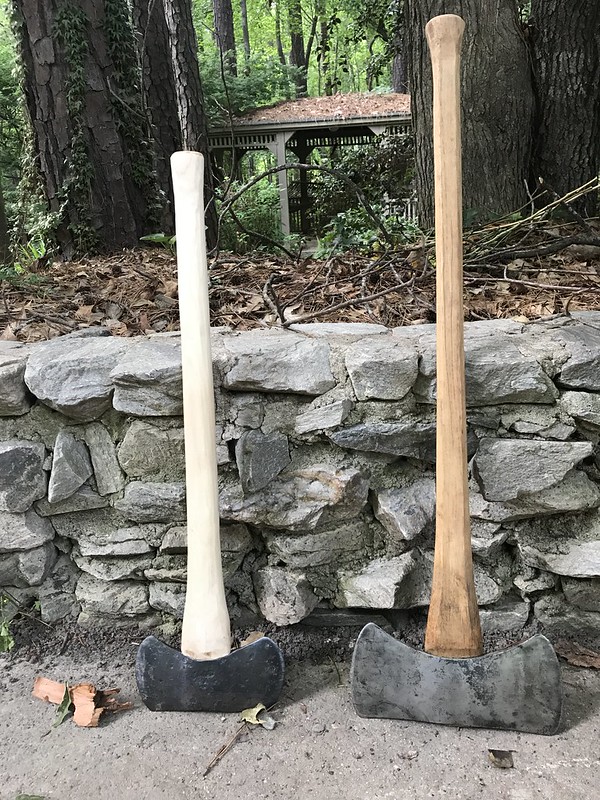jprime84
Gold Member
- Joined
- Jul 7, 2014
- Messages
- 2,021
This ended up almost being a short story. Hope you find it interesting!
My father-in-law lives in an extremely rural valley along what used to be an old logging road near Blowing Rock, NC in the Appalachian mountains. His house has been a home-site since at least 1900 or so. While doing some earth moving to build himself a carport, he unearthed several rusty findings including a few old rasps, horse shoes, and one small double bit axe head.
I didnt take a picture of it before, but it looked like what you would think a carbon steel double bit axe head would look like buried for decades. It was the color of red NC clay, and looked more like an odd shaped rock than an axe head. It eye was filled in with some combination of dirt and petrified wood that turned to powder if you scratched at it. It was hard to tell where the dirt ended and the axe began.
I decided to see what I could make of it. I do apologize for the lack of "in process" photos but really I just got excited with it and wanted to proceed.
I started with a quick scrub of soap and water that got everything loose off it. There were large "flaky" pieces that could be dislodged with some tapping and prying. Again, I couldnt tell if this had once been metal, or if it was some kind of calcification of the ground minerals with the corrosion on the surface.
Once I got most of this "flaky" stuff off, I put it in a vice and pounded out the gunk in the eye of it which just turned to chunky dusty once it fell out. I used small tooth brushes and water to clean as much as I could, but this just resulted in oily rust/clay colored water seeming to not make much progress.
I let the whole thing sit in a tray soaked in WD40 overnight, repeated scrubbing, and then degreased with Dawn and water several times over. Eventually, I ended up with something relatively rust free, at least the larger chunks. The surface of the metal was like looking at a topographical map from high altitude.
Next I got out a 36"x4" belt sander with a 60 grit zirconium belt that could cut the metal fast without building up too much heat. The initial reaction upon hitting the belt was just a plume of red dust, but within another second or two there was a shower of sparks and shiny smooth metal began to peek out from the higher points of elevation on the axe head.
I worked it for a while, hoping to reprofile new edges with minimal pockets of corrosion. I actually noticed what seemed to look like a hamon line on either side. Did makers differentially heat teat axes? I was reluctant to grind too much around the lug as I knew there was only so much metal to work with.
I eventually ended up with something that had two edges more or less, and more shiny metal than not. It still bore plenty of rust craters in its surface, however. I took a tiny fine bristle wire wheel and my dremel tool, and I was able to clear most of this out. Afterwards, I let the whole thing soak in some vinegar for about 4 hours. This applied a renewed layer of corrosion in some places, and patina in others. I gave it another mini wire wheel treatment until I could spot no sign of rust, even in the small micro craters that cover much of the axe head.
I then decided to try and give the surface metal some resistance, and used Birchwood Casey Super Blue to force a patina that would soak down into these tiny and complex surface imperfections. This appears to have worked really well!
I bought a piece of Tennessee hickory with excellent grain, and did my best to hang the axe. The interior of the eye was corroded so badly, that once the compromised material and corrosion was removed, I ended up with less than true hang, but at least its on there!
The axe head itself is about 2 lbs 7 oz, and I put it on about a 28 inch handle. Next steps will be to treat the hickory with some burnished lindseed oil, and put true edges on the steel. I will add pics from here on out.
Pic of current state to come this afternoon.
My father-in-law lives in an extremely rural valley along what used to be an old logging road near Blowing Rock, NC in the Appalachian mountains. His house has been a home-site since at least 1900 or so. While doing some earth moving to build himself a carport, he unearthed several rusty findings including a few old rasps, horse shoes, and one small double bit axe head.
I didnt take a picture of it before, but it looked like what you would think a carbon steel double bit axe head would look like buried for decades. It was the color of red NC clay, and looked more like an odd shaped rock than an axe head. It eye was filled in with some combination of dirt and petrified wood that turned to powder if you scratched at it. It was hard to tell where the dirt ended and the axe began.
I decided to see what I could make of it. I do apologize for the lack of "in process" photos but really I just got excited with it and wanted to proceed.
I started with a quick scrub of soap and water that got everything loose off it. There were large "flaky" pieces that could be dislodged with some tapping and prying. Again, I couldnt tell if this had once been metal, or if it was some kind of calcification of the ground minerals with the corrosion on the surface.
Once I got most of this "flaky" stuff off, I put it in a vice and pounded out the gunk in the eye of it which just turned to chunky dusty once it fell out. I used small tooth brushes and water to clean as much as I could, but this just resulted in oily rust/clay colored water seeming to not make much progress.
I let the whole thing sit in a tray soaked in WD40 overnight, repeated scrubbing, and then degreased with Dawn and water several times over. Eventually, I ended up with something relatively rust free, at least the larger chunks. The surface of the metal was like looking at a topographical map from high altitude.
Next I got out a 36"x4" belt sander with a 60 grit zirconium belt that could cut the metal fast without building up too much heat. The initial reaction upon hitting the belt was just a plume of red dust, but within another second or two there was a shower of sparks and shiny smooth metal began to peek out from the higher points of elevation on the axe head.
I worked it for a while, hoping to reprofile new edges with minimal pockets of corrosion. I actually noticed what seemed to look like a hamon line on either side. Did makers differentially heat teat axes? I was reluctant to grind too much around the lug as I knew there was only so much metal to work with.
I eventually ended up with something that had two edges more or less, and more shiny metal than not. It still bore plenty of rust craters in its surface, however. I took a tiny fine bristle wire wheel and my dremel tool, and I was able to clear most of this out. Afterwards, I let the whole thing soak in some vinegar for about 4 hours. This applied a renewed layer of corrosion in some places, and patina in others. I gave it another mini wire wheel treatment until I could spot no sign of rust, even in the small micro craters that cover much of the axe head.
I then decided to try and give the surface metal some resistance, and used Birchwood Casey Super Blue to force a patina that would soak down into these tiny and complex surface imperfections. This appears to have worked really well!
I bought a piece of Tennessee hickory with excellent grain, and did my best to hang the axe. The interior of the eye was corroded so badly, that once the compromised material and corrosion was removed, I ended up with less than true hang, but at least its on there!
The axe head itself is about 2 lbs 7 oz, and I put it on about a 28 inch handle. Next steps will be to treat the hickory with some burnished lindseed oil, and put true edges on the steel. I will add pics from here on out.
Pic of current state to come this afternoon.

